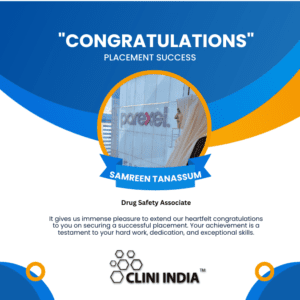
How Patient-Centric Approaches Are Redefining Clinical Trial Success
The traditional model of clinical trials has long focused on meeting regulatory endpoints—efficacy, safety, and statistical significance. While these metrics remain crucial, they often fail to capture the full picture of what success means from a patient’s perspective. Today, a transformative shift is taking place. Clinical trials are evolving from protocol-driven to patient-centric, where the experience, preferences, and outcomes that matter most to patients are becoming central to research design and execution.
What is Patient-Centricity in Clinical Trials?
A patient-centric approach integrates the needs, values, and lived experiences of patients at every stage of a clinical trial—from protocol development and recruitment to data collection and result dissemination. It aims to make trials more accessible, inclusive, flexible, and meaningful for participants.
This is not just about better ethics or improved compliance. It’s about redefining success by prioritizing what matters most to the people the research is intended to help.
Why Patient-Centricity Matters More Than Ever
-
Improved Recruitment and Retention
Trials designed with patient convenience in mind—such as fewer site visits, flexible scheduling, and virtual follow-ups—see significantly higher enrollment and retention rates. -
Better Data Quality
When patients are more engaged and understand the relevance of the trial to their lives, they’re more likely to adhere to protocols and report accurate, consistent data. -
Relevant Outcomes
Traditional endpoints may not fully capture real-world impact. Patient-reported outcomes (PROs) provide insights into quality of life, symptom burden, and functional status—factors that truly reflect treatment value. -
Equity and Inclusion
Patient-centric strategies help reduce disparities by addressing the barriers that underrepresented communities face in accessing trials, such as language, travel, technology, and cultural stigma.
Key Components of a Patient-Centric Trial
-
Co-Design with Patients
Involving patient advocates and advisory boards during protocol development ensures the study addresses real-world concerns and is feasible from the participant’s perspective. -
Decentralized Clinical Trials (DCTs)
Leveraging digital tools—like remote monitoring, e-consent, telemedicine, and wearable devices—makes participation more convenient and accessible, especially for those in rural or underserved areas. -
Flexible Visit Schedules and Home Health Options
Offering choice in how and where trial procedures are conducted demonstrates respect for the patient’s time and circumstances. -
Transparent Communication
Providing patients with regular updates, simplified consent forms, and lay summaries of results fosters trust and transparency. -
Measuring What Matters
Using PROs and real-world endpoints ensures trials evaluate the outcomes that impact daily life—not just clinical measurements.
Redefining Success in the Patient-Centric Era
Success in clinical trials is no longer defined solely by p-values or progression-free survival curves. It now includes:
-
Participant Satisfaction
Was the experience respectful, empowering, and accessible? -
Real-Life Relevance
Did the treatment improve the patient’s quality of life or daily functioning? -
Equitable Access
Was the trial inclusive of diverse populations across race, gender, geography, and socioeconomic status? -
Sustainable Engagement
Did the trial foster long-term trust and involvement in research from the patient community?
Real-World Examples
-
Diabetes Trials have incorporated continuous glucose monitors and smartphone diaries to track patient outcomes in real time, making participation less burdensome.
-
Cancer Research Organizations are increasingly involving patients in trial design to determine acceptable toxicity levels and meaningful endpoints beyond tumor size reduction.
-
Rare Disease Studies often depend on input from patient advocacy groups to identify endpoints and logistics that reflect the realities of small, dispersed patient populations.
The shift toward patient-centric clinical trials represents a fundamental redefinition of success. It acknowledges that patients are not just subjects of research but partners in the process. By aligning trial design with patients’ lives and values, the industry can not only improve data integrity and trial outcomes but also foster a more ethical, efficient, and human-centered research ecosystem.
As this model gains momentum, the most successful trials will be those that ask not just “Is the drug effective?” but also, “Did it make life better for the people it was meant to help?”


























































